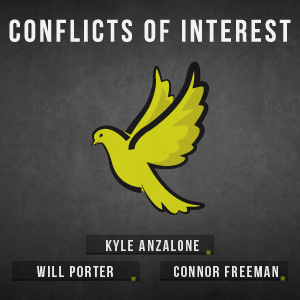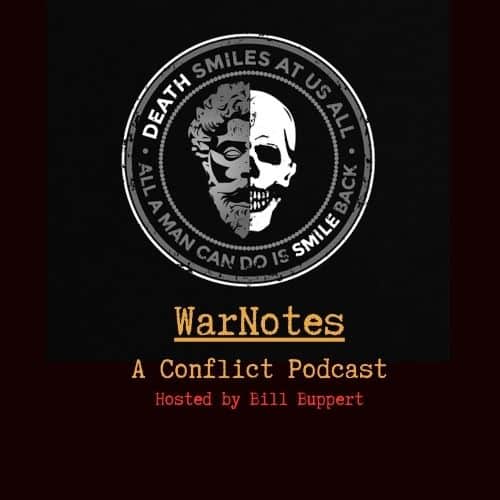For more than two decades, the United States has waged a quiet, little-noticed air and special operations war across the Horn of Africa. If most Americans are unaware of this fact, that is no accident. The campaign in Somalia has been conducted so far from public view, and with so little meaningful debate in Washington, that its continuation today is treated almost as a bureaucratic inevitability—a policy in search of a justification, defended out of habit rather than necessity. For there is no rational reason for the United States to be bombing Somalia at all. The entire enterprise stands as a textbook example of how inertia, institutional self-interest, and the perverse incentives of the national security bureaucracy combine to produce destructive policies that accomplish nothing for the American people.
To begin with, the origins of the current conflict lie not in ancient hatreds or some inevitable African power struggle but in Washington’s own actions. Al-Shabaab—the very group the United States claims to be fighting—emerged directly from U.S. policy. In the early 2000s, Somalia had a measure of stability under the Islamic Courts Union (ICU), a loose coalition of local authorities that managed to reduce violence and impose a workable degree of order in a country wrecked by decades of civil conflict. Because the ICU included Islamist elements, obviously, Washington—fresh from its Manichean post-9/11 worldview—perceived it as a threat. The George W. Bush administration encouraged and supported Ethiopia’s 2006 invasion of Somalia to overthrow the ICU. The result was predictable to anyone familiar with basic insurgency dynamics: the relatively moderate ICU was shattered, and the more extreme elements coalesced into a new, hardened militant group—Al-Shabaab.
In other words, Washington created the very enemy it would then spend the next two decades bombing.
Nor was this the end of the story. When, in the following years, the United States continued intervening—via airstrikes, covert raids, and support for African Union forces—the same process repeated itself. As has happened in Iraq, Syria, Libya, Yemen, and Afghanistan, intervention fractured local society and unleashed yet more violent splinter groups. The emergence of ISIS-Somalia was not the product of ancient sectarianism or some inexplicable African barbarism; it was the predictable outcome of a political and security vacuum repeatedly churned by external meddling. Washington destabilized the country, backed corrupt and weak governments, and turned a local security problem into a regional one. But nothing about this cycle ever seemed to prompt serious reflection among U.S. policymakers.
And so the bombing continues. For more than twenty years, administrations of both parties have conducted airstrikes in Somalia on targets that pose no threat to Americans, in a country that most Americans cannot find on a map, against groups that would not exist had Washington stayed out in the first place. All the while, the Pentagon and CIA describe this as “counterterrorism,” suggesting a necessity that the facts do not support.
To the detached academic observer, it is something almost surreal to behold: the military and intelligence agencies that helped create the problem then cite the problem they created as justification for continued funding, deployments, and operations. It is, in effect, a make-work program for a sprawling national security apparatus desperate to remain relevant, to justify its budgets, and to maintain the illusion of global omnipotence. For the institutional actors involved, the incentives all run one way: keep bombing. Whether the policy accomplishes anything useful is irrelevant.
What the policy does do is kill civilians, inflame local grievances, and deepen anti-American sentiment. These are not abstract concerns. A single drone strike that kills a family or wipes out a wedding party can reverberate through a community for years. It produces recruits. It motivates revenge. It cements the perception—already widespread—that the United States treats Muslim lives as expendable and African sovereignty as something to be brushed aside. In a country as poor and fragile as Somalia, the human cost is enormous.
And for what?
The financial cost, too, is far from trivial. While Pentagon accounting is notoriously opaque one can construct a conservative estimate of the direct expenses associated with the drone war in Somalia quite easily. Based on publicly available information, we can easily calculate that roughly five hundred strikes, assuming a single missile per strike at a generous estimate of $100,000 per Hellfire missile, and roughly two hours of Air Force drone pilot labor time per strike at $42 per hour, would place the direct costs at roughly $50 million. This estimate very much errs on the side of caution: the true cost is doubtlessly higher, given multiple missiles per strike, the logistical and operational expenses, such as fuel, maintenance, ISR support, command overhead, basing costs, satellite bandwidth, and so on.
But even taking this minimal figure, the pure opportunity cost compounds the waste—consider a scenario in which instead of expending these funds on bombing a country that poses no threat to the United States, Washington had simply placed the equivalent of $2 million per year into risk-free assets, discounted conservatively at 2.5% annually. The American public would be ahead by roughly $30 million over the same period. That is money that could have been used for any number of legitimate public needs—or, better yet, left in taxpayers’ pockets. Instead, it has been dissipated in a war that virtually no one outside the Pentagon can justify.
This is not a small point. Policymakers routinely shrug off such sums as rounding errors in the federal budget, but the principle matters. When Washington can casually spend tens of millions bombing rural insurgents 8,000 miles away—insurgents whose existence is largely a consequence of prior U.S. actions—it reveals a political culture utterly disconnected from restraint, accountability, or even basic cost-benefit reasoning. As the old saying has it, “a billion here, a billion there, and pretty soon you’re talking real money.” In this, Somalia is not an exception; it is a window into how U.S. foreign policy functions in practice.
Credible estimates place the total cost of America’s post-9/11 wars at roughly $7 trillion when counting direct appropriations and long-term veterans’ obligations, with the figure rising above $8–10 trillion once homeland security expansions and interest payments on war borrowing are included. But even that staggering total understates the real economic loss. Had Washington simply not gone to war and instead taken the approximate $500 billion per year it burned on these conflicts and placed those funds into risk-free assets earning a modest 2.5%, the result would have been transformative. Over the twenty-four years from 2001 to 2025, the government would have accumulated roughly $16 trillion in additional national wealth. Instead, that money was consumed in conflicts that destabilized entire regions, produced new enemies, and delivered no measurable benefit to the American people. The opportunity cost alone exposes the Global War on Terror not merely as a strategic blunder, but as the single greatest misallocations of resources in U.S. history: from plus roughly $25 trillion down to approximately negative $10 trillion (that’s over 60% of the current national debt, not counting unfunded liabilities).
Somalia threatens no core American interest. It poses no security risk to the United States. Its internal conflicts, tragic as they are, do not require American intervention, and American intervention demonstrably makes them worse. The consequence of two decades of strikes has not been the defeat of Al-Shabaab or the stabilization of the Somali state. Instead, the group remains entrenched, the government remains fragile, and the cycle of violence continues. Washington’s actions have not produced victory; they have produced stalemate and suffering.
Yet even this understates the absurdity. For all the lofty rhetoric about “counterterrorism,” the real drivers behind the continued bombing campaign are bureaucratic and political. Ending the strikes would require admitting that the policy failed. It would require questioning the institutional prerogatives of the Pentagon and intelligence community. It would require reassessing the expansive, post-9/11 worldview that presumes the United States has both the right and obligation to police the world. And so the strikes continue, not because they achieve anything, but because no one with power has any incentive to stop them.
In the end, what we have is the profound disconnect between the interests of the American people and the interests of the national security state. Somalia illustrates, in miniature, the broader pathology of U.S. foreign policy: interventions that create the very threats they claim to counter, costs borne by taxpayers with no corresponding benefit, violence inflicted on civilians for goals that remain undefined, and a political class unwilling to confront the consequences of its own decisions.
There is no reason for the United States to be bombing Somalia. There never was. And the longer this pointless campaign continues, the clearer it becomes that Washington’s problem is not that it lacks enemies, but that it cannot stop manufacturing them.
















